by Benjamin Minch, Staff Writer
Photos by Benjamin Minch
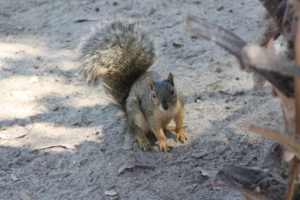
Fox Squirrels
Plenty of these furry, disease carrying creatures can be found around the entirety of the park. The fox squirrel spend most of their time scavenging for food in trees and on the ground, and trying to stay alive. Many bigger birds of prey in the park will eat the Squirrel such as the Owl and various types of hawk. The fox squirrel can wave its tail very fast in order to avoid predation by increasing their body temperature. This throws off many birds because they use infrared heat sensing to find prey.
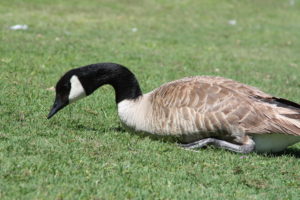
Canada Goose
The Canada Goose is one of the most prevalent animals that can be found around the pond area of the park near Edinger. This goose is extremely noisy and is seen bossing around other ducks in order to protect its young. There are currently two new families of 20 geese each that have been born at the pond, so it is a good season to see these Geese. These geese actually migrate from Canada during the cold winter season. The geese are very territorial and eat the grass at the park, so many times, it is a bad idea to threaten their territory…they will attack!
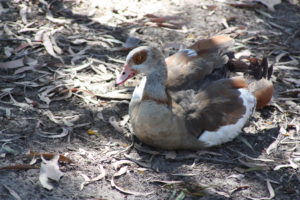
Egyptian Goose
An odd looking Goose, the Egyptian Goose can easily be identified by the brown ring around its eye. This is actually an invasive species of geese that originated in Africa and was brought to the USA during the 1700s. During the spring breeding season, these geese are very aggressive and can hiss and crackle at enemies. These animals will eat just about everything and can be very harmful to the grass by killing it.

Great Blue Heron
The Great Blue Heron is known for its keen hunting skills and are very rare around the park. They mostly hang around the pond area. They can be seen dive-bombing the water in search of fish to eat, but most of the time they will just be relaxing on the uninhabited shores of the pond.
Snowy Egret
The snowy egret is a very clever bird that can often be seen near the park’s pond. The egret gets its food from the fish in the pond and will dive bomb the water, snatching fish from the depths. It is truly an amazing sight to see and experience, so I recommend watching the pond very closely. Many of the egrets like to hang out on the small island in the middle of the pond.
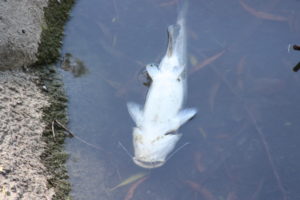
Koi Fish
OC parks, the organization in charge of Mile Square, as well as many other parks, stocks the pond with Koi fish and various other types of fish to help the ecosystem. The fish feed on the plants and also provide food for the birds and sometimes turtles as well. Koi fish are the Japanese fish of love, but recently the Koi fish have been washing up dead on the shores of the pond.
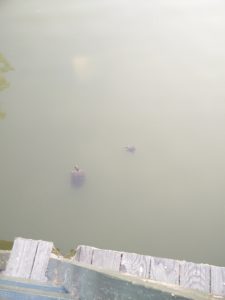
Red-Eared Slider Turtle
The Red Eared Slider Turtle can be seen in Mile Square park in the pond. They are very shy however, and will submerge themselves if they hear any loud noises. There was a recent birth of baby Slider turtles in the park and if you are lucky, you will be able to see the baby turtles peeking their heads out. This turtle is actually an invasive species, but is native to Southern United States. It has an aggressive bite and can even attack ducks and other birds in the water.
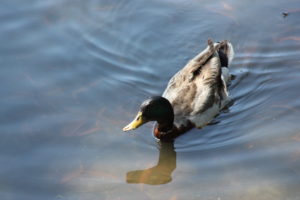
Mallard Duck
The Mallard Duck is probably the most common bird in California besides the Pigeon. If you haven’t seen one before, well… you can see plenty at Mile Square Park. The Mallard ducks don’t take care of their young by feeding them because young ducks already know how to feed themselves from birth. Male ducks have green heads, while females are all brown.






Great article! I did notice that in the first photo you identified the squirrel as a California Ground Squirrel. However, the photo was actually of a Fox Squirrel, an invasive squirrel that can be identified by its bushy tail.